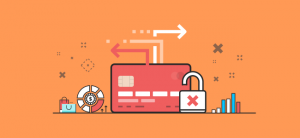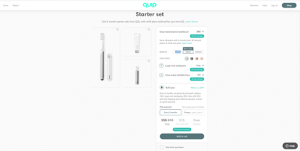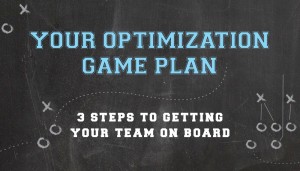One silver lining of COVID-19 appeared when private companies received a short reprieve from the new lease accounting standards courtesy of FASB ASC 842 — “reprieve” being the operative word here.
Come December 2021, these standards go into full effect, giving you less than a year to develop and execute your implementation plan. Since much lease information is often scattered across departments and found in various folders, spreadsheets, and databases, this might not seem like a lot of time.
Fortunately, public companies have already gone through the process of implementing the new lease accounting standards. This gives you the opportunity to learn a thing or two on how to prepare for the transition and sidestep obstacles to ensure ASC 842 compliance.
Steps to Take Before Implementing New Lease Accounting Standards
ASC 842 compliance is complicated, requiring a great deal of coordination to prepare for the likely hurdles ahead. Though the deadline is around a year out, implementation could take much longer than expected and might call for significant changes to your processes and internal controls. Similarly, it could force your organization to evaluate the need for lease accounting software. Here’s how your company can avoid potential pitfalls:
1. Establish a migration timeline.
Many companies will find it necessary to invest in new technology solutions. Why? Aligning with the new lease accounting standards becomes herculean when you’re trying to migrate leasing information from disparate databases, spreadsheets, and other systems that are often maintained by different individuals.
Careful planning is a necessity to not only ensure complete migration, but also establish appropriate operating procedures going forward. Otherwise, compliance with these new lease accounting standards will quickly come into question. In the meantime, refer to the FASB for implementation resources and technical inquiry services.
2. Gather all necessary documentation.
Although it might seem like an obvious step, the entire process of finding and documenting all original contracts, lease amendments, and other leasing agreements takes considerable time and energy. Companies should also review current contracts to ensure there are no embedded leases within the contract resulting in being in scope for ASC 842.
Complicating matters further is the need for team members to manually enter lease terms, rent schedules, rental options, terminations fees, tenant rights, tenant improvements, and so on. However, new lease accounting software allows everyone to view and manage the entire portfolio in one place. Suddenly, maintaining companywide lease accounting compliance becomes that much easier.
3. Spread the word to end-to-end stakeholders.
ASC 842 implementation — and any associated technology investment — will affect more than merely accounting. Everyone from IT to lease administration will experience some level of operational change and needs to understand the implications.
With this, seek input from a member of each department during the vetting and onboarding process for lease accounting software. This should help ensure buy-in and shed light on any additional benefits of moving to a centralized system. For example, most new lease accounting software offers improved analytics and forecasting capabilities, allowing finance teams to better capture portfolio performance and determine next steps on properties. Real estate teams, on the other hand, can also pull detailed leasing information whenever necessary. The entire staff works from a single source of truth, which adds to your company’s agility.
Maintaining FASB ASC 842 Compliance After Transition
If you’re at all familiar with ASC 842, you already know that it requires all operating leases move on a balance sheet. Other, smaller changes include lease identification, re-measurement events, impairment assessments, sale-leaseback, and build-to-suit.
With lease identification, many contracts might now fall within the scope of lease accounting under these new guidelines. As such, review your processes to ensure proper monitoring of all new contracts and share each change across business functions. Lease accounting under ASC 842 might be necessary for certain contracts, including data management, outsourced warehousing, and other asset-related arrangements.
If there is a contract modification or change in the lease term, lessees might need to remeasure their lease liability and adjust right-of-use (or ROU) lease assets using an updated discount rate. They may also need to reevaluate their contract consideration allocation and lease classification. Similar to other property, plant, and equipment items, an impairment assessment will now need to be performed on ROU assets.
Another change from ASC 840 to ASC 842 is sale-leaseback transactions now require that both the seller-lessee and buyer-lessor evaluate the sale and transfer of asset control from an accounting perspective. Obtaining a fixed-price purchase option, for instance, could theoretically constitute control if that option is reasonably certain to be exercised.
Much like sale-leaseback, the lease accounting standard update of build-to-suit generally involves control. Should the lessee obtain control of the property during the construction period, it might change the nature of the transaction and could be seen as a financing arrangement rather than a lease agreement. A determination would then need to be made by all parties around asset control.
With the new lease accounting standards going into effect soon, companies should start thinking about how updated lease accounting software solutions fit into their workflows — including how to select an ideal provider. Although FASB’s ASC 842 can create confusion when it comes to lease accounting standards, with the right tools and processes in place, it certainly doesn’t have to. Start planning today for implementation, and start looking at new technology solutions that allow you to more quickly respond to any inevitable change on the horizon. After all, compliance is nothing to leave until the last minute.
If you’d like to learn more about how our lease accounting software can ease your compliance needs, sign up for a free demo of Occupier.
Business & Finance Articles on Business 2 Community
(55)
Report Post







